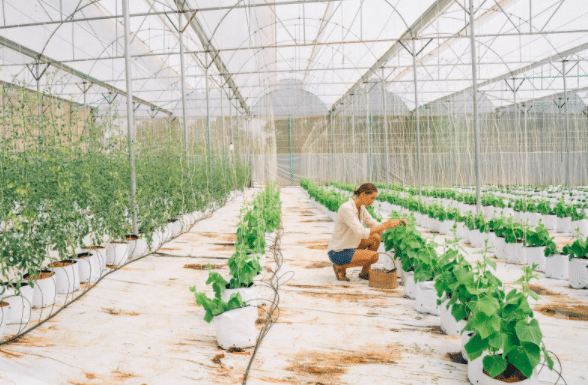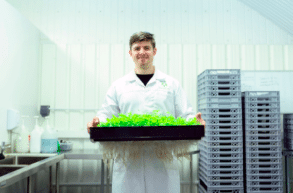The world is changing. We are in the midst of a revolution, where technology is trumping tradition and innovation is king. There was once a time when people would grow crops outside on their land, but with all the changes to our climate, this has become increasingly difficult. Thankfully, there are still many people who have found ways to successfully grow crops indoors! Here’s how you can too!
Natural Light
The most important factor of growing plants indoors is light. Plants need light to grow, and it can’t be too hot or too cold outside either – you will need a greenhouse. Obviously, city living doesn’t allow for this and requires more space than most people have (and more money). If your house is already large then you’re in luck, but if not, you will need to find a good spot for your growing plants indoors. Wherever it might be, make sure that there is no artificial light close by because plants can’t grow in the presence of regular light, therefore you’ll need indoor growers with lights that mimic the sun. You can build your own using fluorescent lights, for example. If you don’t have the time or money to do that though, then just buy the best indoor grower.
The best place for a greenhouse is where natural light enters the room – usually, an East facing window would be the best to ensure maximum growth. In other cases, grow lights can be moved around and kept as close to the plants as you want, and if you’re growing outdoors then that’s not possible.
Moving your light frequently allows your indoor plants to remain healthy and strong via photosynthesis. The more sunlight they receive, the less likely it will be for them to become sick or die.
Temperature
Another important factor of growing indoors is temperature. If the temperature is too low, then your plants won’t grow. If it’s too high, they will die. The trick to avoid either of these outcomes is to keep the temperature an average of 70F. If you’re growing indoors, then that means regulating the heating and air conditioning (if you use AC) during certain times of year (in winter, turn down the AC).
Alternatively, if you have a greenhouse or want to build one outside but still need insulation for your plants inside or at night, consider using polyethylene plastic sheeting over wireframes as “walls.” Or do both if you can afford it – insulate with plastic sheeting and heat with thick fabric hung from wireframes across part of the greenhouse.
What you need to remember is that the temperature of your room should be similar to the climate where the plant originally comes from. For example, if you’re growing tomatoes then they’ll need a warmer environment around 18-24 degrees Celsius. Room temperature is usually suitable for most plants, but some may need more or less.
Humidity
The humidity of your plants’ environment is important, too – especially if you’re growing inside. Without proper humidity, your indoor crops can go into shock and die. If the humidity is too high then the leaves will rot, making it difficult for photosynthesis to occur. To ensure that your humidity levels are sufficient you can use a humidifier or place your plants near a water source.
You can also increase the humidity levels by placing your plants in a tray of water and adding stones to it so that the Evaporation process can take place – this is called humidifying.
Soil Composition
The last factor of growing indoors is soil composition, which should be determined by the plant you are trying to grow. Some may prefer more acidic soil with others preferring alkaline. However, most indoor plants will do well in standard potting mix enriched with perlite, vermiculite, or composted bark humus – that is if they need any special care at all.
Many crops don’t need soil but grow in water (hydroponics). This is a method where the plant’s roots are suspended in a nutrient-rich solution and it’s one of the most efficient ways to grow crops indoors, especially if you don’t want to mess with the soil spread around your home.
Time and Care
The amount of time and care you put into growing your indoor crops will determine how successful they’ll be.
If you’re attentive to the needs of your plants, then they’ll thrive. However, if you’re not able to water and monitor them every day then you may want to try a different hobby. If you don’t want to consider crop breeding a hobby, then choose your plants carefully and only grow the ones you’re able to care for.
Growing crops indoors is a lot trickier than one might think. There are many factors to take into consideration, and it can be difficult if you’re not aware of the risks certain conditions may pose on your plants. With this article, hopefully, you’ll have some insight as to what’s most important when considering different growing environments for your indoor crops- natural light, temperature, humidity, and soil composition. Keep these in mind next time you want to grow something inside!


















